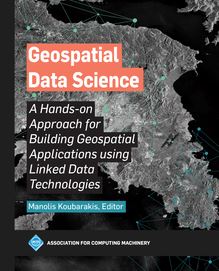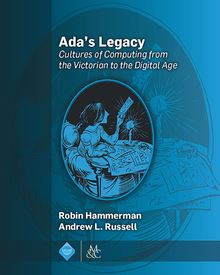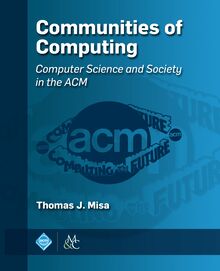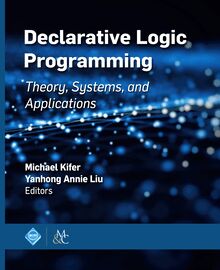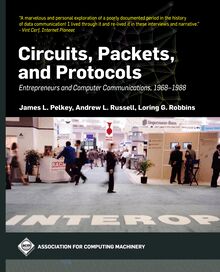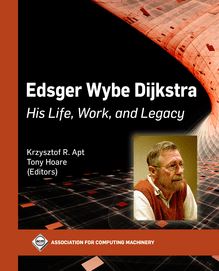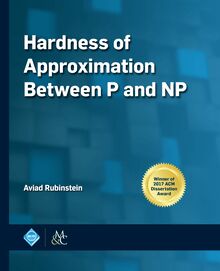-
 Univers
Univers
-
 Ebooks
Ebooks
-
 Livres audio
Livres audio
-
 Presse
Presse
-
 Podcasts
Podcasts
-
 BD
BD
-
 Documents
Documents
-
- Cours
- Révisions
- Ressources pédagogiques
- Sciences de l’éducation
- Manuels scolaires
- Langues
- Travaux de classe
- Annales de BEP
- Etudes supérieures
- Maternelle et primaire
- Fiches de lecture
- Orientation scolaire
- Méthodologie
- Corrigés de devoir
- Annales d’examens et concours
- Annales du bac
- Annales du brevet
- Rapports de stage
La lecture à portée de main
Vous pourrez modifier la taille du texte de cet ouvrage
Découvre YouScribe en t'inscrivant gratuitement
Je m'inscrisConversational UX Design , livre ebook
Découvre YouScribe en t'inscrivant gratuitement
Je m'inscrisEn savoir plus
Vous pourrez modifier la taille du texte de cet ouvrage
En savoir plus

Description
With recent advances in natural language understanding techniques and far-field microphone arrays, natural language interfaces, such as voice assistants and chatbots, are emerging as a popular new way to interact with computers.
They have made their way out of the industry research labs and into the pockets, desktops, cars and living rooms of the general public. But although such interfaces recognize bits of natural language, and even voice input, they generally lack conversational competence, or the ability to engage in natural conversation. Today’s platforms provide sophisticated tools for analyzing language and retrieving knowledge, but they fail to provide adequate support for modeling interaction. The user experience (UX) designer or software developer must figure out how a human conversation is organized, usually relying on commonsense rather than on formal knowledge. Fortunately, practitioners can rely on conversation science.
This book adapts formal knowledge from the field of Conversation Analysis (CA) to the design of natural language interfaces. It outlines the Natural Conversation Framework (NCF), developed at IBM Research, a systematic framework for designing interfaces that work like natural conversation. The NCF consists of four main components: 1) an interaction model of “expandable sequences,” 2) a corresponding content format, 3) a pattern language with 100 generic UX patterns and 4) a navigation method of six basic user actions. The authors introduce UX designers to a new way of thinking about user experience design in the context of conversational interfaces, including a new vocabulary, new principles and new interaction patterns. User experience designers and graduate students in the HCI field as well as developers and conversation analysis students should find this book of interest.
- Preface
- Introduction
- Conversation Analysis
- Conversation Authoring
- Natural Conversation Framework
- Conversational Activity UX Patterns
- Sequence Management UX Patterns
- Conversation Management UX Patterns
- Conversational UX Design Process
- Conclusion
- Appendix A
- Appendix B
- Appendix C
- Appendix D
- References
- Index
- Author Biographies
Sujets
Informations
| Publié par | Association for Computing Machinery and Morgan & Claypool Publishers |
| Date de parution | 29 mai 2019 |
| Nombre de lectures | 0 |
| EAN13 | 9781450363037 |
| Langue | English |
| Poids de l'ouvrage | 1 Mo |
Informations légales : prix de location à la page 0,2798€. Cette information est donnée uniquement à titre indicatif conformément à la législation en vigueur.
Extrait
Conversational UX Design
ACM Books
Editor in Chief
M. Tamer Özsu, University of Waterloo
ACM Books is a series of high-quality books for the computer science community, published by ACM and many in collaboration with Morgan & Claypool Publishers. ACM Books publications are widely distributed in both print and digital formats through booksellers and to libraries (and library consortia) and individual ACM members via the ACM Digital Library platform.
Conversational UX Design: A Practitioner’s Guide to the Natural Conversation Framework
Robert J. Moore, IBM Research–Almaden
Raphael Arar, IBM Research–Almaden
2019
Heterogeneous Computing: Hardware and Software Perspectives
Mohamed Zahran, New York University
2019
Making Databases Work: The Pragmatic Wisdom of Michael Stonebraker
Editor: Michael L. Brodie
2018
The Handbook of Multimodal-Multisensor Interfaces, Volume 2: Signal Processing, Architectures, and Detection of Emotion and Cognition
Editors: Sharon Oviatt, Monash University
Björn Schuller, University of Augsburg and Imperial College London
Philip R. Cohen, Monash University
Daniel Sonntag, German Research Center for Artificial Intelligence (DFKI)
Gerasimos Potamianos, University of Thessaly
Antonio Krüger, Saarland University and German Research Center for Artificial Intelligence (DFKI)
2018
Declarative Logic Programming: Theory, Systems, and Applications
Editors: Michael Kifer, Stony Brook University
Yanhong Annie Liu, Stony Brook University
2018
The Sparse Fourier Transform: Theory and Practice
Haitham Hassanieh, University of Illinois at Urbana-Champaign
2018
The Continuing Arms Race: Code-Reuse Attacks and Defenses
Editors: Per Larsen, Immunant, Inc.
Ahmad-Reza Sadeghi, Technische Universität Darmstadt
2018
Frontiers of Multimedia Research
Editor: Shih-Fu Chang, Columbia University
2018
Shared-Memory Parallelism Can Be Simple, Fast, and Scalable
Julian Shun, University of California, Berkeley
2017
Computational Prediction of Protein Complexes from Protein Interaction Networks
Sriganesh Srihari, The University of Queensland Institute for Molecular Bioscience Chern Han Yong, Duke-National University of Singapore Medical School
Limsoon Wong, National University of Singapore
2017
The Handbook of Multimodal-Multisensor Interfaces, Volume 1: Foundations, User Modeling, and Common Modality Combinations
Editors: Sharon Oviatt, Incaa Designs
Björn Schuller, University of Passau and Imperial College London
Philip R. Cohen, Voicebox Technologies
Daniel Sonntag, German Research Center for Artificial Intelligence (DFKI)
Gerasimos Potamianos, University of Thessaly
Antonio Krüger, Saarland University and German Research Center for Artificial Intelligence (DFKI)
2017
Communities of Computing: Computer Science and Society in the ACM
Thomas J. Misa, Editor, University of Minnesota
2017
Text Data Management and Analysis: A Practical Introduction to Information Retrieval and Text Mining
ChengXiang Zhai, University of Illinois at Urbana–Champaign
Sean Massung, University of Illinois at Urbana–Champaign
2016
An Architecture for Fast and General Data Processing on Large Clusters
Matei Zaharia, Stanford University
2016
Reactive Internet Programming: State Chart XML in Action
Franck Barbier, University of Pau, France
2016
Verified Functional Programming in Agda
Aaron Stump, The University of Iowa
2016
The VR Book: Human-Centered Design for Virtual Reality
Jason Jerald, NextGen Interactions
2016
Ada’s Legacy: Cultures of Computing from the Victorian to the Digital Age
Robin Hammerman, Stevens Institute of Technology
Andrew L. Russell, Stevens Institute of Technology
2016
Edmund Berkeley and the Social Responsibility of Computer Professionals
Bernadette Longo, New Jersey Institute of Technology
2015
Candidate Multilinear Maps
Sanjam Garg, University of California, Berkeley
2015
Smarter Than Their Machines: Oral Histories of Pioneers in Interactive Computing
John Cullinane, Northeastern University; Mossavar-Rahmani Center for Business and Government, John F. Kennedy School of Government, Harvard University
2015
A Framework for Scientific Discovery through Video Games
Seth Cooper, University of Washington
2014
Trust Extension as a Mechanism for Secure Code Execution on Commodity Computers
Bryan Jeffrey Parno, Microsoft Research
2014
Embracing Interference in Wireless Systems
Shyamnath Gollakota, University of Washington
2014
Conversational UX Design
A Practitioner’s Guide to the Natural Conversation Framework
Robert J. Moore
IBM Research–Almaden
Raphael Arar
IBM Research–Almaden
ACM Books #27
Copyright © 2019 by Association for Computing Machinery
All rights reserved. No part of this publication may be reproduced, stored in a retrieval system, or transmitted in any form or by any means—electronic, mechanical, photocopy, recording, or any other except for brief quotations in printed reviews—without the prior permission of the publisher.
Designations used by companies to distinguish their products are often claimed as trade marks or registered trademarks. In all instances in which the Association for Computing Machinery is aware of a claim, the product names appear in initial capital or all capital letters. Readers, however, should contact the appropriate companies for more complete information regarding trademarks and registration.
Conversational UX Design: A Practitioner’s Guide to the Natural Conversation Framework Robert J. Moore
Raphael Arar
books.acm.org
http://books.acm.org
ISBN: 978-1-4503-6301-3 hardcover
ISBN: 978-1-4503-6302-0 paperback
ISBN: 978-1-4503-6303-7 ePub
ISBN: 978-1-4503-6304-4 eBook
Series ISSN: 2374-6769 print 2374-6777 electronic
DOIs:
10.1145/3304087 Book
10.1145/3304087.3304095 Chapter 7
10.1145/3304087.3304088 Preface
10.1145/3304087.3304096 Chapter 8
10.1145/3304087.3304089 Chapter 1
10.1145/3304087.3304097 Chapter 9
10.1145/3304087.3304090 Chapter 2
10.1145/3304087.3304098 Appendix A
10.1145/3304087.3304091 Chapter 3
10.1145/3304087.3304099 Appendix B
10.1145/3304087.3304092 Chapter 4
10.1145/3304087.3304100 Appendix C
10.1145/3304087.3304093 Chapter 5
10.1145/3304087.3304101 Appendix D
10.1145/3304087.3304094 Chapter 6
10.1145/3304087.3304102 References/Index/Bios
A publication in the ACM Books series, #27
Editor in Chief: M. Tamer Özsu, University of Waterloo
Area Editor: Michel Beaudouin-Lafon, Université Paris-Sud and Institut Universitaire de France
This book was typeset in Arnhem Pro 10/14 and Flama using ZzTEX.
Cover art: Raphael Arar.
Cover image: The Euphonia, (The Talking Machine); Source: The London Journal: Weekly Record of Literature, Science and Art . NO. 1340, VOL. LII, London: 1870, November 1, 1870, pg. 245.
First Edition
10 9 8 7 6 5 4 3 2 1
Contents
Preface
Chapter 1 Introduction
1.1 Natural Language Interfaces
1.2 Conversational UX Design
1.3 Conversation First
1.4 Mutual Understanding
1.5 About This Book
Chapter 2 Conversation Analysis
2.1 What Is a Conversation?
2.2 Topic vs. Structure
2.3 Anatomy of a Conversation
2.4 Conversation Types
2.5 Conclusion
Chapter 3 Conversation Authoring
3.1 A Simple Finite-State Machine
3.2 Conditions (Intents, Entities, Context)
3.3 Responses
3.4 Branching
3.5 Conclusion
Chapter 4 Natural Conversation Framework
4.1 Interaction Model
4.2 Content Format
4.3 Conversational Activity Patterns
4.4 Conversation Navigation
4.5 Conclusion
Chapter 5 Conversational Activity UX Patterns
5.1 Pattern Language for Conversational UX
5.2 A1 Inquiry (User)
5.3 A2 Open Request
5.4 A3 Extended Telling
5.5 A4 Quiz
5.6 A5 Inquiry (Agent)
5.7 Combining Patterns
5.8 Conclusion
Chapter 6 Sequence Management UX Patterns
6.1 B1 Repair (Agent)
6.2 B2 Repair (User)
6.3 B3 Extended Repair
6.4 B4 Sequence Closers
6.5 B5 Sequence Abort
6.6 Conclusion
Chapter 7 Conversation Management UX Patterns
7.1 C1 Opening (Agent)
7.2 C2 Opening (User)
7.3 C3 Capabilities
7.4 C4 Closing
7.5 C5 Disengaging
7.6 Conclusion
Chapter 8 Conversational UX Design Process
8.1 Design Thinking
8.2 Stage 1: Empathize
8.3 Stage 2: Define
8.4 Stage 3: Ideate
8.5 Stage 4: Prototype
8.6 Stage 5: Test
8.7 Conclusion
Chapter 9 Conclusion
9.1 Conversation Metrics
9.2 Final Thoughts
Appendix A Conversation Analysis Transcription Conventions
Appendix B Dialog Design Pseudocode
Appendix C NCF Pattern Language Summary
NCF Pattern Types
NCF Patterns and Examples
Appendix D Sample Conversation with Alma
References
Index
Author Biographies
Preface
Ever since I started working in Silicon Valley research labs, I have dreamed of designing machines that can talk. As a sociologist trained in ethnomethodology and Conversation Analysis (CA), I have always been eager to apply my knowledge of the “machinery” of human conversation to the design of conversational machines. While at Xerox’s Palo Alto Research Center (PARC), beginning in 1999, I asked my colleagues specializing in natural language processing why we could not build a conversational system. They told me it would require a dialog platform, which we did not have. Years later in 2012, I joined IBM’s Almaden Research Center (ARC) in San Jose. Having watched Watson beat human champions at Jeopardy only the year before, my first thought was, how can I teach Watson to hold a conversation? By 2013 I was asked to advise a group that was doing just that. I shared my formal knowledge of the structure human conversation to suggest ways that their system could be more “conversational.”
Then in 2015, IBM developed its own dialog platform, the Watson Dialog service. The platform provided an authoring tool for creating natural language interactions that anyone could use, even a sociologist! Immediately I began learning the simplified, GUI-based programming tool and creating conversational u
-
 Univers
Univers
-
 Ebooks
Ebooks
-
 Livres audio
Livres audio
-
 Presse
Presse
-
 Podcasts
Podcasts
-
 BD
BD
-
 Documents
Documents
-
Jeunesse
-
Littérature
-
Ressources professionnelles
-
Santé et bien-être
-
Savoirs
-
Education
-
Loisirs et hobbies
-
Art, musique et cinéma
-
Actualité et débat de société
-
Jeunesse
-
Littérature
-
Ressources professionnelles
-
Santé et bien-être
-
Savoirs
-
Education
-
Loisirs et hobbies
-
Art, musique et cinéma
-
Actualité et débat de société
-
Actualités
-
Lifestyle
-
Presse jeunesse
-
Presse professionnelle
-
Pratique
-
Presse sportive
-
Presse internationale
-
Culture & Médias
-
Action et Aventures
-
Science-fiction et Fantasy
-
Société
-
Jeunesse
-
Littérature
-
Ressources professionnelles
-
Santé et bien-être
-
Savoirs
-
Education
-
Loisirs et hobbies
-
Art, musique et cinéma
-
Actualité et débat de société
- Cours
- Révisions
- Ressources pédagogiques
- Sciences de l’éducation
- Manuels scolaires
- Langues
- Travaux de classe
- Annales de BEP
- Etudes supérieures
- Maternelle et primaire
- Fiches de lecture
- Orientation scolaire
- Méthodologie
- Corrigés de devoir
- Annales d’examens et concours
- Annales du bac
- Annales du brevet
- Rapports de stage
